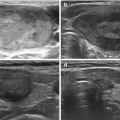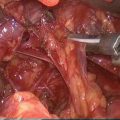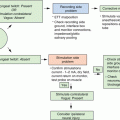© Springer International Publishing Switzerland 2016
Celestino Pio Lombardi and Rocco Bellantone (eds.)Minimally Invasive Therapies for Endocrine Neck Diseases10.1007/978-3-319-20065-1_2020. Topical Hemostatic Agents
Luca Revelli1 , Serena Elisa Tempera1 , Chiara Bellantone1, Marco Raffaelli1 and Celestino Pio Lombardi1
(1)
Unità Operativa di Chirurgia Endocrina e Metabolica, Università Cattolica del Sacro Cuore, Roma, Largo Agostino Gemelli, 8, Rome, RM, 00168, Italy
Keywords
HemorrhageHemostasisHemostatic agentNeck surgeryThyroid20.1 Introduction
Even when suitable anesthetics became available, many surgeons believed that operations on the thyroid gland were too hazardous to be attempted. Especially for the most serious complication of thyroidectomy: bleeding [1].
Can thyroid gland be removed with a reasonable hope of saving the patient? Experience emphatically answers: no.
Should the surgeon be so adventurous or foolhardy to undertake the enterprise …
… every stroke of his knife will be followed by a torrent of blood and lucky will it be for him if his victim lives long enough to enable him to finish his horrid butchering …
[…] No honest and sensible surgeon would ever engage in it.
Samuel D. Gross (1805–1884), Professor of Surgery, Jefferson Medical College, Philadelphia
System of Surgery
Appalling results of thyroid surgery led, in 1646, to the imprisonment of a surgeon for his work [2].
In 1850 – given the miserable outcomes of thyroidectomies – the French Académie Royale de Médecine forbade any operation on goiter [3, 4].
During the 1860s to the 1880s the introduction of improved anesthesia, new methods of infection prophylaxis, and improved hemostasis technique would provide the impetus for an important change.
The early history of hemostasis – as outlined beautifully by Samuel Clark Harvey in 1929 – starts with the use of crude ligatures, cautery, hot oil, and caustic substances to control hemorrhage [5].
It was only in 1600 that Ambroise Parè, a French surgeon, introduced vascular ligation as the preferable method to provide bleeding control.
The first effective hemostatic forceps were introduced only in 1874 by Thomas Spencer Wells (1818–1897) in London and by Jules Emile Péan (1830–1898) in Paris [5].
The use of such devices began much earlier in Europe than in the United States. William Steward Halsted (1852–1922) witnessed thyroid surgeries using dozens of hemostats while in Europe during 1879. His only prior experience with their use, during thyroid surgery in the United States, had occurred at the Roosevelt Hospital of New York under Henry Berton Sands (1830–1888). At that time, the entire American hospital had only two hemostats at their disposal [4]. Halsted championed the use of hemostats in his country upon his return to the United States late in 1879.
Forceps had a marked influence on outcomes of thyroid surgery [6].
Incidence of morbidity with thyroid surgery decreased significantly after standardization of the capsular dissection technique by Thompson in 1973 [7], and total thyroidectomy is increasingly accepted for the treatment of cancer and benign thyroid diseases.
New technologies for the prevention and control of bleeding were gradually introduced in surgical practice over the past century: electrical scalpel (1924), bipolar forceps (1940s), and recently the radio frequency and ultrasonic scalpel (2000s).
A critical problem for the surgeon in the operating room has been always oozing blood, where cautery and suture ligation are not feasible. For this reason, over the past decades, means such as lasers (CO2, Argon, and Nd-YAG), and spray-electrocoagulation have been introduced. Topical agents have also been developed to promote hemostasis in a wide variety of surgical procedures where the control of bleeding may result particularly difficult or impossible (coagulopathies and platelets dysfunction, parenchymal tissues, bony surfaces, etc.). Most of these topical agents were originally developed to improve wound healing in soldiers with severe burn injuries during World War I, World War II, and Vietnam and Korea War [8].
Currently, hypoparathyroidism and recurrent laryngeal nerve palsy are the most frequent postoperative complications associated with thyroid surgery. In terms of severity, postoperative hemorrhage is a rare but potentially lethal complication, occurring in 0.3–2 % of cases [9–13].
Hemorrhage correlated with a thyroidectomy usually occurs within 24 h, and the most significant hematomas become apparent after 6–8 h [14].
More in detail, the time of occurrence of the postoperative hematoma would be in:
1.
<1–2 % of cases, immediate/early
2.
43 % within 6 h
3.
38 % between 7 and 12 h
The intraoperative bleeding hampers the vision of the operative field and of the delicate anatomical structures, complicating the surgical dissection: it can cause indirect morbidity related to injury of the recurrent nerves and lesions of the parathyroid glands.
20.2 Indications
Topical hemostatic agents (THA) are used when surgical hemostasis is inadequate or impractical. Electrocautery may not be useful for controlling bleeding in some surgical fields such as:
1.
Around nerves (e.g., recurrent laryngeal nerve, vagus, spinal accessory, loop of the hypoglossal nerve)
2.
Medullary bone surfaces (e.g., hyoid bone after Sistrunk’s procedure)
3.
Needle-hole bleeding from vascular grafts
4.
Raw areas on cut surfaces (e.g., muscle fibers, thyroid tissue, parenchyma of the salivary glands)
The majority of routine, elective operations are performed in patients with normal hemostasis and with minimal blood loss.
Patients who are anticoagulated and those with bleeding diatheses (e.g., factor deficiencies, disseminated intravascular coagulation), or have platelets dysfunction (e.g., aspirin therapy) can continue to ooze from surgical surfaces in spite of adequate surgical hemostasis [16].
Under ideal circumstances, patients with hemostatic abnormalities have their underlying defects corrected prior to proceeding with surgery; however, this is not always possible. Anticoagulated patients, patients receiving antiplatelet therapy, and those with congenital or acquired bleeding diatheses may require emergency surgical procedures to manage trauma or unrelated conditions or to manage hemorrhage that is a result of their disorder. Under these circumstances, correction of the hemostatic defect is undertaken en route to or simultaneously with the procedure [17].
Hemostatic abnormalities can also develop during the course of surgery (e.g., hypothermia, disseminated intravascular coagulation).
The newer oral anticoagulant drugs (rivaroxaban [Xarelto®], apixaban [Eliquis®], and dabigatran [Pradaxa®]), unlike warfarin, do not have a reversal agent. Biologically active topical hemostats may be effective in this setting [18].
20.3 Topical Hemostatic Agents
The four main categories of topical hemostatic agents (THA) are as follows:
1.
Physical passive agents (passive hemostatics), which promote hemostasis using a passive substrate, including collagen, gelatins, and regenerated oxidized cellulose. Their mechanism of action is to provide platelet activation and aggregation. They are of bovine, equine, swine, or vegetable origin and are available as sponge, sheets, gauze, fleece, and powder [8, 17].
2.
Biologically active agents (active hemostatics), which enhance coagulation at the bleeding site. Active agents participate at the end of the coagulation cascade to form a fibrin clot. This group includes products containing fibrinogen and thrombin (fibrin sealants, adhesive sealants).
Products with purified fibrinogen and thrombin were first successfully used in the 1970s. The first fibrin sealants to be commercially available in Europe were, in the early 1980s, Tissucol® and Beriplast®, whereas in the United States the Food and Drug Administration (FDA) approved the licensing of fibrin sealants only in 1998 because of the presumed risk of viral hepatitis transmission. The lack of availability of these products in the United States until 1998 resulted in the production of fibrin glue from blood-bank cryoprecipitate (“home-made”) with a lower concentration of fibrinogen [19]. At the moment, fibrin sealants are still the most effective hemostatic adhesive agents available for surgical purpose [8].
3.
Sealants (tissue adhesive) and topical agents, which are not strictly hemostatic. They have adhesive and sealing properties that make them be useful in wound closure, vascular anastomosis protection, and prevention of leakages. They may be synthetic (cyanoacrylates and PEG – polyethylene glycol sealants) or semisynthetic (glutaraldehyde-albumina) sealants [20].
4.
Combined THA, products made by a combination of different THA or TA.
20.3.1 Passive Hemostatics
Passive hemostatics (PH) promote hemostasis through several effects. The matrix material provides a stimulus that activates platelets and the extrinsic pathway and provides a scaffold for thrombus deposition. The dry matrix also absorbs water and concentrates hemostatic factors at the site of bleeding, and tamponades bleeding vessels by exerting pressure.
Stay updated, free articles. Join our Telegram channel

Full access? Get Clinical Tree






